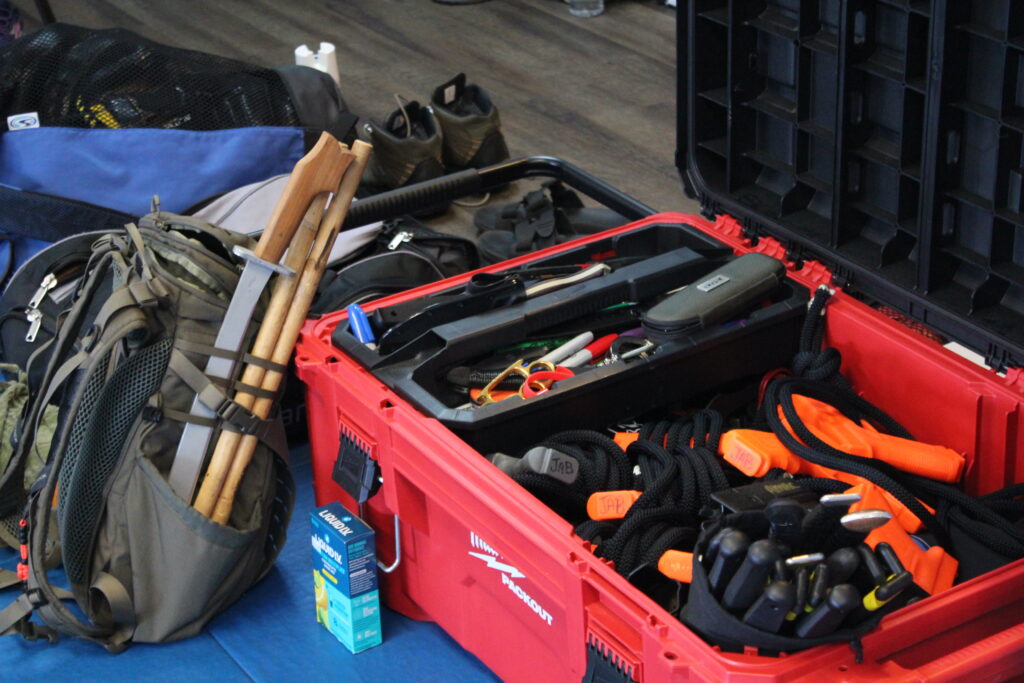
I often speak about the importance of not becoming systemized by the martial art you’re training in. Today, I want to dive a little deeper into this concept and challenge you to evaluate where your own training fits into the broader scale of violence and real-world scenarios.
Imagine this: You’re walking down a dark alley with your family. Out of nowhere, a group of rough-looking individuals approaches, and they make it clear through their words and demeanor that they intend to harm you and your loved ones.
Now, as a trained martial artist, your initial reaction might be to think, “I’ve got this. I’ll go over there and use the techniques I’ve been taught—I’ll arm-bar, choke, and control them all. That’s what my system has prepared me for.”
This is an example of being stuck in a systemized approach’s limiting mindset. When we become too reliant on the techniques we’ve drilled in a controlled environment, we risk missing the bigger picture of what real violence entails—particularly when it escalates beyond what our training has prepared us for.
The Limitations of “Systemized” Thinking
The truth is, there are practitioners out there who genuinely believe that their system, as it stands, represents the full spectrum of what they are capable of on the scale of violence. They’ve never been introduced to higher levels of destructive force or methods of dealing with extreme threats. This isn’t necessarily their fault—it often comes down to the limitations of the system they’re training or the scope of their instructor’s curriculum. If those elements don’t encompass a wide spectrum of potential threats, then that practitioner remains unaware of what they’re missing.
Now, I want to be clear—I don’t have a problem with specialized systems as long as this limitation is clearlycommunicated and understood within the training environment. It’s vital that we understand where our system fits within the force continuum and the types of situations it’s designed to handle. For example, I absolutely love the grappling arts. I’ve been training in them for over 30 years. But it’s crucial to understand where grappling fits into the overall equation of violence—because, in a life-or-death situation, some systems simply aren’t designed to handle certain levels of aggression or chaos.
And that’s okay—as long as you know that. It’s fine to specialize in grappling, striking, or any other art as long as you have a clear understanding of its strengths and limitations. But when you’re faced with real violence—like an attack in a parking lot between two cars, where two or three aggressors outnumber you—you need to recognize that your training may need to shift beyond the confines of any one system.
Evaluate Your Plan
So, I say all of this to challenge you to take a step back and look at your own plan. Approach it from a broad perspective and ask yourself these critical questions:
Where does my system fit into the potentially violent situations I may face?
Does my training or my system give me the tools I need to handle the reality of violent conflict?
This process is what opened my eyes early in my training. By asking these questions, I became aware of the gaps in my knowledge and skillset. And once you recognize where your training falls short, it empowers you to seek out the information and experience needed to fill those gaps.
Adapting Beyond the System
No single martial art is a complete solution to every problem. That’s why it’s essential to avoid becoming “systemized” or trapped in the belief that one approach will work for every scenario. Real violence is unpredictable. It doesn’t play by the rules of your dojo or sparring sessions, and it certainly doesn’t care how many belts you’ve earned or how many techniques you’ve mastered.
What does matter is your ability to adapt—to recognize when your current training is insufficient for the reality of the situation, and to have the flexibility and foresight to adjust accordingly. That may mean adding new layers of training, such as integrating firearms, improvised weapons, or even situational awareness drills that expand your response options beyond your current system.
The Birth of C-Tac®: Filling the Gaps
This is one of the core reasons I created the C-Tac® System. Although I had studied multiple martial arts throughout my life, I came to realize that I still had major gaps in my skillset and knowledge—especially when it came to handling real-world, high-stress scenarios where the stakes were life or death.
Many of the systems I trained in were highly effective within their specialized areas, but they didn’t always address the broader spectrum of violence that I knew could occur outside the dojo or training mats. I needed something more—a system that could handle the complexities of self-defense in any environment, whether it was a confrontation in a parking lot, inside a vehicle, or while protecting my family in public spaces. Traditional training often didn’t cover the realities of armed attackers, multiple assailants, or how to integrate improvised weapons and firearms into a cohesive defensive strategy.
That’s why I developed C-Tac®. It was designed specifically to bridge the gap between traditional martial arts and the unpredictable nature of civilian-based self-defense. C-Tac® integrates situational awareness, legal compliance, and a full range of defensive tactics, including firearms, empty-hand techniques, and practical grappling, all adapted for street-level encounters.
A key part of the system is understanding the force continuum—knowing when and how to escalate or de-escalate force based on the threat level. Whether you’re defending yourself in close quarters, such as inside a vehicle, or responding to a threat in a more open environment, C-Tac® prepares you to think quickly, adapt, and apply the appropriate level of response.
I realized that without this type of training, there would always be limitations in my ability to handle the wide variety of threats that exist in the world. It’s not enough to be an expert in one discipline—you need to be adaptable, and you need a system that reflects the fluid, unpredictable nature of real-world violence. C-Tac® was created to give you that adaptability to fill those gaps in your own knowledge, and to ensure that no matter where you are or what situation you find yourself in, you have the tools and mindset to protect yourself and those around you.
Takeaway
So, here’s my challenge for you this week: Take a critical look at your training. Identify where it fits in the spectrum of potential violence, and acknowledge its limitations. Once you understand where you may be lacking, you’ll be empoweredto seek out the right tools and skills to truly protect yourself and your loved ones in the real world.
Shift Your Perspective, Take the Action, Transform Your World.
~ Sifu Alan

Alan Baker is renowned for his dual expertise in crafting tailored Defensive Tactics Programs and high-performance coaching. Catering specifically to law enforcement agencies, military organizations, and security firms, Alan designs training regimens that emphasize practical techniques, real-world adaptability, and scenario-based training. His approach enhances the capabilities and readiness of personnel in intense situations. Explore Alan’s tailored programs here.
Beyond mere tactics, Alan stands out as the paramount “Self Leadership” coach, adept at unlocking the vast potential within individuals. With a deep passion for mentoring professionals, entrepreneurs, and those on personal growth odysseys, he focuses on nurturing a mindset of excellence. Alan’s coaching hinges on practical strategies that bolster mental resilience, focus, and drive. Teaming up with Alan means embarking on a transformative path where mental barriers are dismantled, inherent strengths come to the fore, and your goals become within clear sight. His profound insights enhance performance and sculpt a mindset tailored for triumphant success.
To delve deeper into Alan’s mindset philosophy, peruse his enlightening collection of books And if you’re ready to amplify your journey under Alan’s tutelage, connect through his official website.


1 thought on “The Full Spectrum Of Violence”